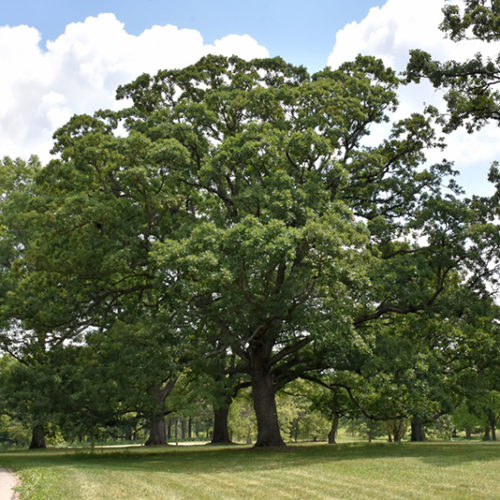Growing White Oak Tree
The Quercus alba (White Oak Tree) living tree serves as an enduring representation of durability and historical significance alongside its natural splendor. The presence of this species across wide-ranging landscapes shows its fundamental influence on ecosystems alongside its impact on human civilization and folklore. The tribes considered it sacred because of its impressive height and valuable resources. The early European settlers utilized this species extensively to construct ships and buildings and make barrels, which cemented its historical significance. Fossil records reveal that this species existed in North America long before written history and has flourished for millions of years.
White Oak Tree Medicinal Significance Through the Ages
Quercus alba has been a medicinal resource for healers and herbalists for centuries, thanks to its strong healing properties. Because of its high tannin content, the bark found extensive use in wound and infection treatment, where it acted as an astringent to stop bleeding. Native American tribes used the inner bark to brew teas that treated digestive problems and reduced symptoms of sore throats and fever. The anti-infective qualities within its bark serve medicinal purposes when applied in poultices to diminish inflammation and support wound recovery. Soldiers in the American Civil War used bark decoctions to treat dysentery and gangrene when regular medicine was lacking. Contemporary herbalists use extracts from this species to create tonics that improve digestive health and skin care.

First Encounters and Early Uses
The oldest documented records of Quercus alba appear in narratives from European explorers who visited North America during the 1600s, but its use by indigenous peoples has extended back several millennia. Spanish explorers observed extensive forests primarily occupied by this species, which they recorded as valuable for building purposes and used in traditional medical practices. During territorial expansion White Oak wood emerged as an essential material in early American industry because of its durability which made it perfect for building ships, homes and whiskey barrels. Before Europeans arrived indigenous peoples used its acorns as essential food which needed proper leaching to eliminate tannins before eating.
White Oak Tree A Natural Masterpiece in Landscaping
White Oak Tree stands out for its exceptional adaptability and impressive presence when utilized in landscape designs. The expansive canopy of this tree provides enough shade for preference in urban parks and big homes. The expansive root system helps to stabilize soil while preventing erosion and enhancing land health. The mature tree develops gnarled branches and textured bark, which bestow an elegant ancient appearance on its surroundings while reinforcing the impression of enduring stability. While it contributes to visual landscapes this species functions as an anchor in restoration efforts which leads to increased biodiversity and ecological stability. This tree stands out both when planted alone or amidst other trees in a woodland environment.
Defining Beauty: Appearance and Seasonal Changes
The tall and broad-branching Quercus alba specimen stands out in its full glory by captivating viewers with its impressive height and expansive branches. The trunk of this tree reaches 80 to 100 feet in height and features bark with deep ridges that change from light gray to a darker color as it ages. The leaves burst forth in spring with a soft silvery-green color and then change to a deep rich green during summer. The arrival of autumn transforms their coloration into russet, wine-red, and bronze shades, which produce a remarkable seasonal spectacle. The winter branches of this tree display an architectural marvel through their skeletal structure which withstands harsh weather conditions.
White Oak Tree: A Haven for Rare and Captivating Wildlife
White Oak Tree functions as an essential habitat for diverse wildlife, including rare species that exist nowhere else. Birds, including the red-headed woodpecker and eastern bluebird, find vital nourishment from acorns, whereas black bears and white-tailed deer depend on them throughout autumn and winter. Diverse insects find their habitat on the leaves and bark of trees, including larvae from the mesmerizing purple hairstreak butterfly. Older specimens contain cavities that are used as nesting places by both owls and small mammals. Only a few species produce this vast array of life support, which establishes their status as keystone organisms within their natural habitat.
Quercus alba demonstrates robust resilience against natural forces.
White Oak Tree demonstrates an extraordinary level of resilience. The species survives harsh winters and dry periods across multiple environments and has become a long-standing landscape feature for numerous centuries. The extensive taproot system enables the tree to maintain stability during high winds and reach underground water during droughts. This species shows an exceptional capability to resist pests and fungal infections unlike many other species that are vulnerable to diseases. This majestic giant demonstrates its strength and adaptability through its ability to survive over 500 years.